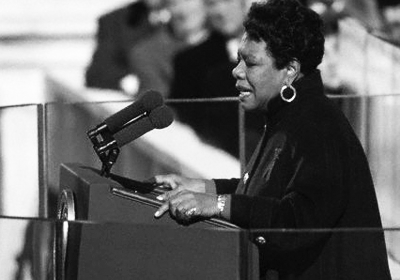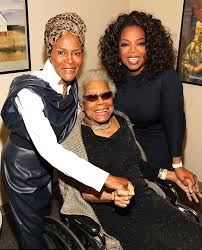As Black History Month draws to a close, the legacy of Dr. Maya Angelou, poet, sage, and unflinching champion of Black resilience, shines bright in the dying embers.
From TikTok captions to protest signs, her words still soar, bite, and heal, proving that her impact is as alive today as it was during the Civil Rights Movement. Here’s how the woman who taught us why “the caged bird sings” remains a cultural force decades after her passing.
Maya Angelou was born in St. Louis, Missouri on April 4, 1928. She faced numerous challenges in her early life, including a sexual assault by her mother’s boyfriend when she was about 7 years old, a traumatic experience that led her to stop speaking for several years. During this period of silence, Angelou discovered her gift for writing.
She earned a scholarship to the Labor School in San Francisco to pursue studies in dance and drama, and in 1954, she landed a role in the opera Porgy and Bess, which toured approximately 20 countries. She collaborated closely with Martha Graham, known as the “mother of modern dance,” and Alvin Ailey, a pioneering African-American choreographer, and activist whose celebrated work Revelations is regarded as the most recognized and frequently performed dance piece. Her experience expanded further in 1957 with the release of her debut album, Calypso Lady.

In 1958, Angelou relocated to New York, where she became a prominent member of the Harlem Writers Guild, the oldest organization of African American writers, activists, and scholars, and participated in the significant off-Broadway production of The Blacks by French playwright Jean Genet.
She later moved to Cairo, Egypt, taking on the role of editor for The Arab Observer. During the decolonization period, she lived in Ghana, where she taught at the University of Ghana’s School of Music and Drama while also serving as an editor for The African Review and contributing to The Ghanaian Times.
While overseas, she engaged in intensive study and reading, achieving fluency in Spanish, Italian, French, Arabic, and Fanti. It was during this period that she met Malcolm X. She came back to the United States in 1964 and assisted him in creating his new Organization of African American Unity until his assassination in 1965.
Maya Angelou subsequently collaborated with Martin Luther King, Jr. in the Southern Christian Leadership Conference, a civil rights organization focused on King’s principles, significantly contributing to the Civil Rights movement. King’s assassination, occurring on her birthday in 1968, had a profound impact on Angelou.

Angelou was motivated by her friend and fellow writer James Baldwin to create what turned into her most famous work, I Know Why the Caged Bird Sings, released in 1969 and setting Angelou’s international recognition. Her published fiction, nonfiction, and poetry body encompasses more than 30 bestselling titles.
Maya Angelou received the Presidential Medal of Arts in 2000 and the Lincoln Medal in 2008. She has been honored with three Grammy Awards and approximately 50 honorary degrees. In 1993, at the request of President Bill Clinton, she recited her poem “On the Pulse of the Morning” during his inauguration. This event was broadcast worldwide, making her the first poet to perform at a presidential inauguration since Robert Frost delivered his poem at John F. Kennedy’s inauguration in 1961.
As we wrap up Black History Month, we pay tribute to Maya Angelou not only for her extensive literary contributions but also for her steadfast dedication to empowering others. Her voice, gentle yet powerful, serves as a reminder that art can act as a catalyst for social change and that words, in the hands of the right individual, can genuinely transform the world.
